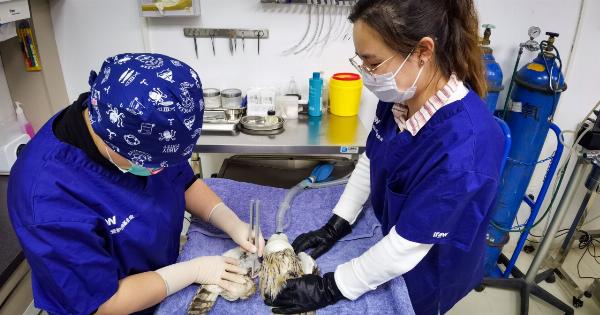The world has experienced several pandemics, epidemics, and outbreaks in the past century. From the Spanish Flu of 1918 to the recent COVID-19 outbreak, viruses have wreaked havoc across the globe.
However, one interesting phenomenon is that viruses have yet to make an appearance in rural areas. This article aims to explore why rural areas have been able to avoid being hit by viruses and whether they are susceptible to a potential outbreak.
Rural Areas and Isolation
One of the crucial factors that have kept rural areas safe from viral outbreaks is their isolation. Unlike urban areas, rural areas are sparsely populated, which reduces the likelihood of a contagious disease spreading.
Additionally, rural areas are often far away from airports or ports, which are the main points of entry for viruses into a country. As such, the physical distance from major cities and transportation hubs has acted as a buffer that has protected rural areas from being hit by viruses.
The low population density and limited mobility make it easy to contain an outbreak if it occurs in rural areas.
Agriculture and Livestock
Rural areas are typically agricultural and have a high concentration of livestock. While this may seem to increase the risk of a virus outbreak, the reality is quite the opposite.
Farmers are generally acutely aware of any diseases that affect their livestock, and they have robust protocols in place to control and prevent outbreaks. Additionally, farmers tend to have a high degree of responsibility when it comes to their livestock, and hence they are more likely to report any unusual patterns of disease. This early warning system can help to prevent disaster.
Furthermore, the remoteness of rural areas also plays a role in reducing the risk of disease transmission. The low population density means that animals have minimal contact with other animals, reducing the likelihood of a contagious disease spreading.
Healthcare Facilities
One of the drawbacks of rural areas is that they have limited access to healthcare facilities. This lack of access can make it challenging to detect and treat diseases. However, this has not stopped rural areas from being able to avoid viral outbreaks.
In some cases, rural areas may have a small hospital or health center, which is staffed by a handful of healthcare professionals. They are generally well-equipped to deal with most medical issues that arise in the area.
Additionally, the isolation of rural areas from major population centers means that healthcare professionals can quickly detect and isolate any potential contagions. The early detection and isolation can help prevent the disease from spreading to the wider population.
Community Resilience and Cooperation
Rural areas tend to have a strong sense of community. There is a greater sense of social connectedness, which means that people are more likely to come together during tough times.
This sense of community is what has helped rural areas to withstand various natural disasters, from floods to hurricanes. Additionally, rural areas tend to be more self-reliant, which means that people are more likely to take individual responsibility for their health. This can range from taking precautions such as washing hands regularly to getting vaccinated.
The strong sense of community and individual responsibility can reduce the likelihood of a viral outbreak occurring in rural areas.
Challenges Ahead
While rural areas have been able to avoid outbreaks in the past, the future may present new challenges. With globalization, people are more connected and mobile than ever before. Disease outbreaks can spread rapidly across borders.
Additionally, rural areas are not free from modern life’s scourges, such as chronic diseases like obesity and diabetes. These chronic diseases can weaken people’s immune systems and make them more susceptible to viral infections. As such, rural areas must find ways to adapt to the changing world.
Conclusion: Are Rural Areas Susceptible to Viral Outbreaks?
Rural areas have been able to avoid viral outbreaks in the past due to factors such as their isolation, agriculture, and livestock, healthcare facilities, and community resilience. However, this does not mean that they are immune to future outbreaks.
Rural areas must continue to invest in infrastructure and healthcare to stay ahead of infectious diseases’ curve. Additionally, people in rural areas must continue to take individual responsibility for their health by taking precautions and getting vaccinated.
By doing so, rural areas can continue to enjoy a healthy and vibrant way of life while avoiding the ravages of viral outbreaks.































